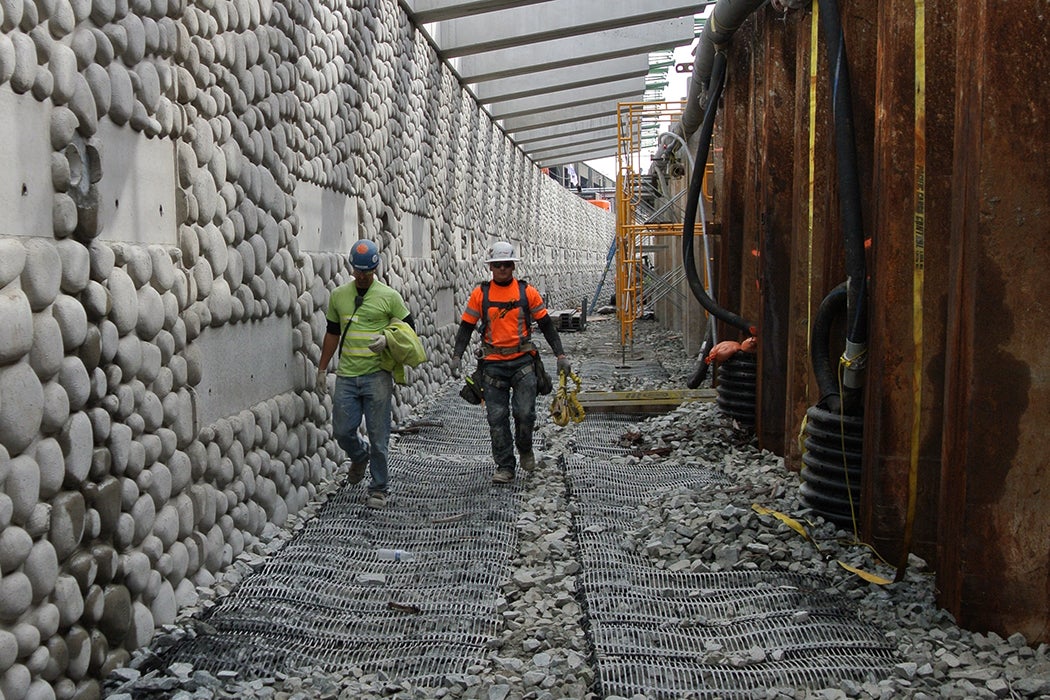In an age of sea level rise, coastal communities are desperate to protect themselves from the rising water. Traditional approaches mainly include “hardened” defenses such as seawalls, groins, bulkheads, etc. But in vulnerable areas, such as Seattle and low-lying Florida, a new approach called “living shorelines” is gaining in popularity.
Living shorelines arose out of some of the problems from the traditional shore defenses. As described by marine scientist Jennifer E. D. O’Donnell in the Journal of Coastal Research, hard shorelines are effective, but there are downsides. Coastal habitat for marine life and birds is lost (sometimes the entire intertidal zone is lost), and coastal processes like the natural movement of sand are curtailed. Hard structures also require constant maintenance, and can’t be easily adjusted to meet changing circumstances.
The actual definition of a living shoreline varies, and that inconsistency can be a barrier to implementation. Most definitions involve a “shoreline management practice” that provides protection and erosion control while providing shoreline habitat and maintaining coastal processes. It’s a broad definition, and living shorelines can take many different forms. In sheltered areas, simply restoring marsh vegetation is enough to meet the criteria. After all, restore enough vegetation and there is not only habitat but a sponge to absorb damaging storm surges.
In areas with higher wave action, a common technique is to build a more natural barrier out of materials such as oyster shells, loose rocks, fiber bales, or any barrier that breaks up wave energy while allowing the passage of water. The outer barrier provides protection and some marine habitat; behind the barrier marsh vegetation and beaches can be restored without being washed away. This approach not only partially or fully restores the coastal ecosystem but in many cases costs less than a traditional hard barrier. Maintenance costs are lower over time as well, and these features don’t shift the problems to other areas.
Want more stories like this one?
A full living shoreline isn’t going to work everywhere, however. For example, in the middle of an urban harbor, there simply isn’t enough space to restore salt marsh. In these cases, as explained by biologists Fabio Bulleri and Maura G. Chapman in Journal of Applied Ecology, a hard shoreline can be installed that still provides some of the benefits of a living shoreline. Some possibilities include building texture into the wall to create habitat for marine life, or installing rock pools and ledges to restore some intertidal habitat. The city of Seattle is a pioneer of this approach.
It’s important to note that living shorelines, while an improvement over traditional coastal barriers, can only maintain some ecosystem function. A living shoreline can mitigate damage and provide local benefits. But it can’t compensate for all other forms of damage. Accordingly, municipalities will benefit most from living shorelines if they also protect the environment in other ways, such as carefully managing stormwater.







